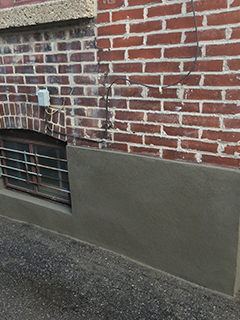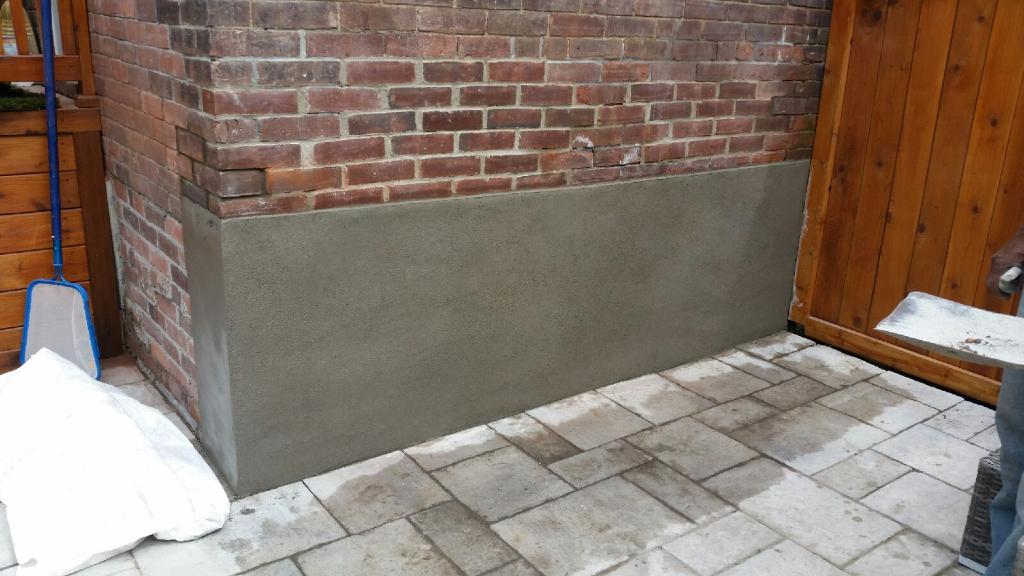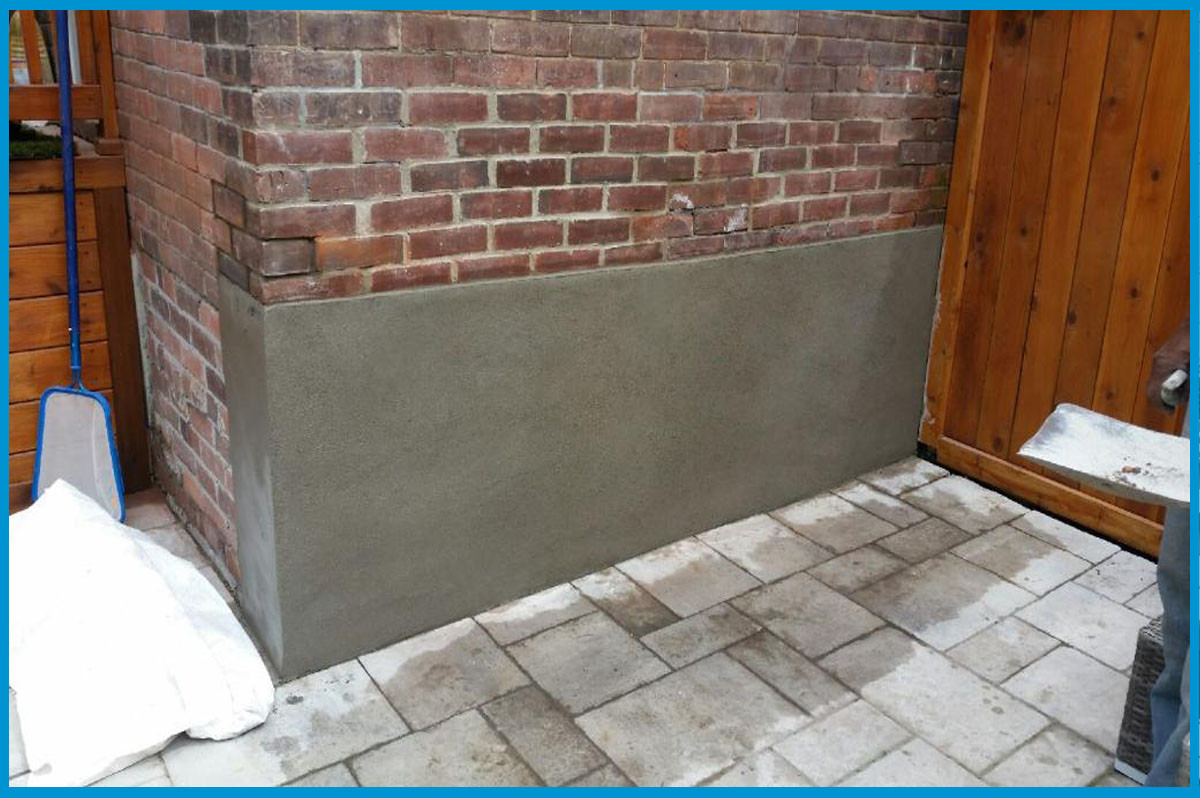What Is Parging?
What is parging?
The process of parging generally refers to the application of a cement coating, which is applied over a wall surface, such as over a foundation, or exterior wall. Most common is the process of parging over a masonry foundation wall or a masonry chimney.
What is the purpose of parging?
Parging cement can have several variations in terms of the elements used in the particular concrete mixture used. Such elements can include latex-based colours, fiber materials designed to add strength, or different mix ratios in the concrete itself, depending on the purpose of the application. Such work typically falls in the domain of the mason’s craft.
For example; foundation walls which are constructed with cement blocks, are recommended to receive a coating of cement over the exterior portion. Parging the surface of the blocks provides for a clean, smooth surface, for which waterproofing coatings may then be applied. When a home or building’s foundation may require waterproofing below grade, in future years after initial construction (often 25 to fifty years later); part of a comprehensive job will involve inspecting and repairing any shaled parging which may have resulted over time.
Exposed portions of foundations which are visible above grade are commonly parged to provide extra protection for the poured concrete or block construction foundation walls. It also results in a neat finished appearance.
Other examples of parging can be observed on an exterior garden or retaining walls, and on exterior structural walls; particularly those that have a Mediterranean or French Chateau style.
A skilled mason makes parging look simple, but it requires considerable practice to achieve a smooth appearance. Textured appearances may also be achieved by adding such materials as pebbles or smooth rocks applied to cement coating materials.
 Parging is often used in instances where severe and widespread brick deterioration can be found on building walls. The home or building owner may elect to essentially cover over the brick surface with a cement coating. Under certain conditions, It is considered a best practice to apply a galvanized steel mesh over the wall surface, before the first application of cement parging; referred to as the “scratch coat”. A scratch coat may include detail involving a grooved appearance which is achieved using a notched trowel. A finish coat of cement is then applied after the scratch coat has had the opportunity to properly set up and cure. Such times can vary based on temperature and climatic conditions. The finish coat typically has a smooth and uniform appearance. Depending on the application requirements; a finish coat may use a lighter cement mix.
Parging is often used in instances where severe and widespread brick deterioration can be found on building walls. The home or building owner may elect to essentially cover over the brick surface with a cement coating. Under certain conditions, It is considered a best practice to apply a galvanized steel mesh over the wall surface, before the first application of cement parging; referred to as the “scratch coat”. A scratch coat may include detail involving a grooved appearance which is achieved using a notched trowel. A finish coat of cement is then applied after the scratch coat has had the opportunity to properly set up and cure. Such times can vary based on temperature and climatic conditions. The finish coat typically has a smooth and uniform appearance. Depending on the application requirements; a finish coat may use a lighter cement mix.
Why do you need a skilled mason?
It is important to note that when undertaking such work, a skilled mason should be consulted to evaluate the sub-surface and determine if parging is the correct approach. For example; masonry chimneys that are severely deteriorated should be rebuilt so they are structurally sound, prior to the application of cement parging.
Another reason for parging can be to fill “bug holes or pinholes” in concrete surfaces. Such holes can result in outgassing (expulsion of trapped air within a cement mixture).
Proper preparation of a wall surface being re-parged, involves the following steps:
- Chisel off any loose or flaking existing parging,
- Using a wire brush; vigorously scrape away any excess flakes, dust, and debris.
- Clean the surface using water via a power washer, to remove algae, dirt, and particulates.
- Apply a liquid bonding agent over the surface to promote superior adhesion.
- Application of one coat of mortar, at an approximate thickness of 3/8”.
- Application of a finish coat at an approximate thickness of 3/8” (if applicable)
- Application of a mesh material as an intermediary step prior to parging mix application, as /if required for structural integrity, and commensurate with an intended purpose.
- As the parging cures over days; apply water at intervals, to help the curing process. While not mandatory, a mason may elect to do so under some project circumstances and or temperature conditions.
 Techniques for applying parging involve using a wide trowel and applying it to the surface wall in an upward and angular motion. After a manageable surface has been covered, the mason will typically re-skim over the surface applied, in an effort to smooth out the finished appearance and remove excess materials. After the parging mix has been set appropriately (usually fifteen minutes); the mason will use a wetted hand float, and smooth over the finished area.
Techniques for applying parging involve using a wide trowel and applying it to the surface wall in an upward and angular motion. After a manageable surface has been covered, the mason will typically re-skim over the surface applied, in an effort to smooth out the finished appearance and remove excess materials. After the parging mix has been set appropriately (usually fifteen minutes); the mason will use a wetted hand float, and smooth over the finished area.
Refined skills resulting from considerable practice, demonstrate the finesse of the mason when tooling such details as internal and external corners and arch details. Often wood forms (which are wetted down so they don’t stick); are used to make a precise corner detail.
The subject of parging as it pertains to the masonry craft, has many nuances in light of various application purposes, requirements, weather, and climatic conditions. For example, hot western climates may require the constant applications of water to keep materials pliable, whereas eastern climates may command a variation in the application method.
To learn more about parging or other related masonry topics, visit www.avenueroadmasonry.com

